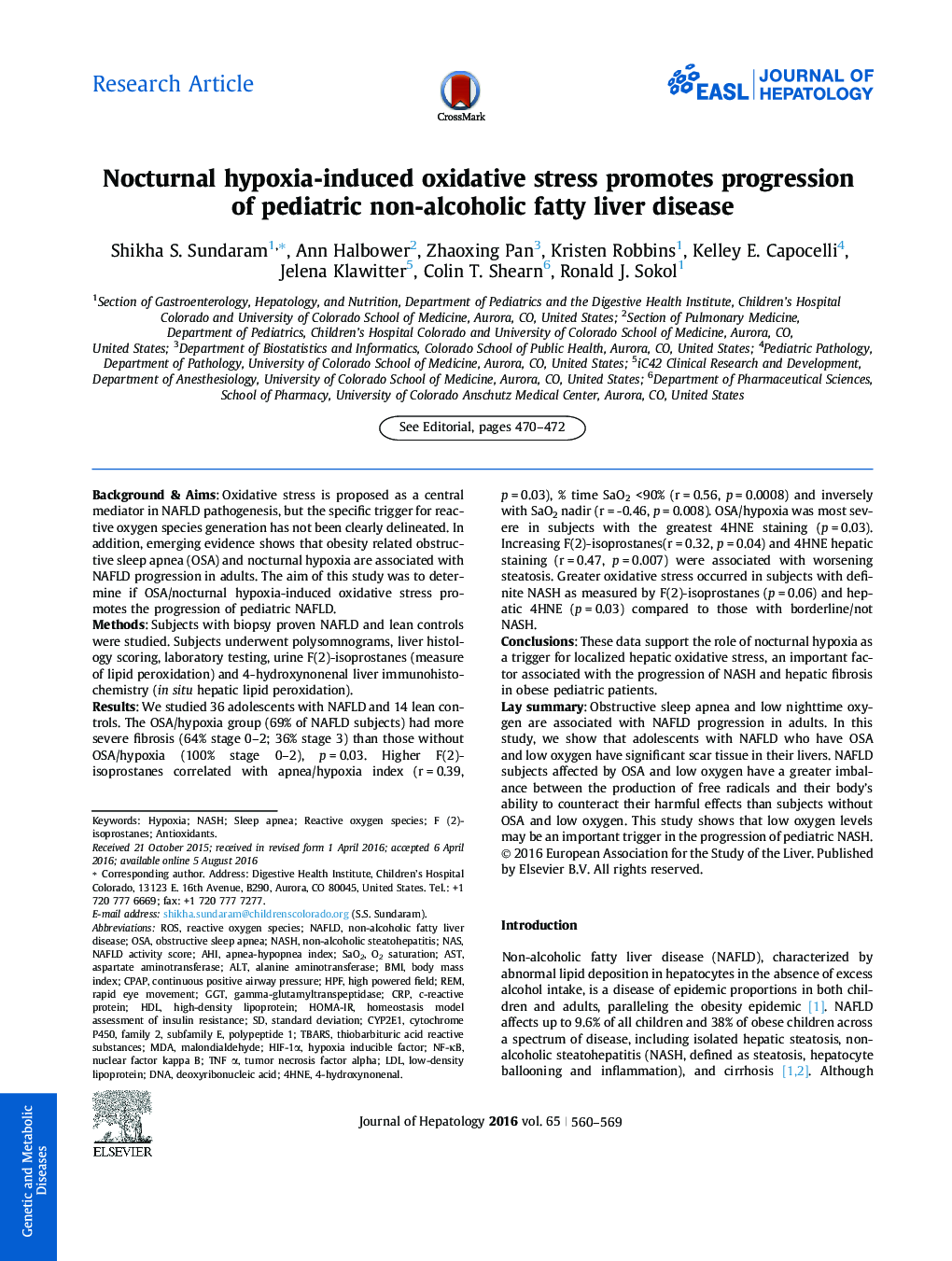| کد مقاله | کد نشریه | سال انتشار | مقاله انگلیسی | نسخه تمام متن |
|---|---|---|---|---|
| 6101152 | 1211099 | 2016 | 10 صفحه PDF | دانلود رایگان |
Background & AimsOxidative stress is proposed as a central mediator in NAFLD pathogenesis, but the specific trigger for reactive oxygen species generation has not been clearly delineated. In addition, emerging evidence shows that obesity related obstructive sleep apnea (OSA) and nocturnal hypoxia are associated with NAFLD progression in adults. The aim of this study was to determine if OSA/nocturnal hypoxia-induced oxidative stress promotes the progression of pediatric NAFLD.MethodsSubjects with biopsy proven NAFLD and lean controls were studied. Subjects underwent polysomnograms, liver histology scoring, laboratory testing, urine F(2)-isoprostanes (measure of lipid peroxidation) and 4-hydroxynonenal liver immunohistochemistry (in situ hepatic lipid peroxidation).ResultsWe studied 36 adolescents with NAFLD and 14 lean controls. The OSA/hypoxia group (69% of NAFLD subjects) had more severe fibrosis (64% stage 0-2; 36% stage 3) than those without OSA/hypoxia (100% stage 0-2), p = 0.03. Higher F(2)-isoprostanes correlated with apnea/hypoxia index (r = 0.39, p = 0.03), % time SaO2 <90% (r = 0.56, p = 0.0008) and inversely with SaO2 nadir (r = -0.46, p = 0.008). OSA/hypoxia was most severe in subjects with the greatest 4HNE staining (p = 0.03). Increasing F(2)-isoprostanes(r = 0.32, p = 0.04) and 4HNE hepatic staining (r = 0.47, p = 0.007) were associated with worsening steatosis. Greater oxidative stress occurred in subjects with definite NASH as measured by F(2)-isoprostanes (p = 0.06) and hepatic 4HNE (p = 0.03) compared to those with borderline/not NASH.ConclusionsThese data support the role of nocturnal hypoxia as a trigger for localized hepatic oxidative stress, an important factor associated with the progression of NASH and hepatic fibrosis in obese pediatric patients.Lay summaryObstructive sleep apnea and low nighttime oxygen are associated with NAFLD progression in adults. In this study, we show that adolescents with NAFLD who have OSA and low oxygen have significant scar tissue in their livers. NAFLD subjects affected by OSA and low oxygen have a greater imbalance between the production of free radicals and their body's ability to counteract their harmful effects than subjects without OSA and low oxygen. This study shows that low oxygen levels may be an important trigger in the progression of pediatric NASH.
133
Journal: Journal of Hepatology - Volume 65, Issue 3, September 2016, Pages 560-569
